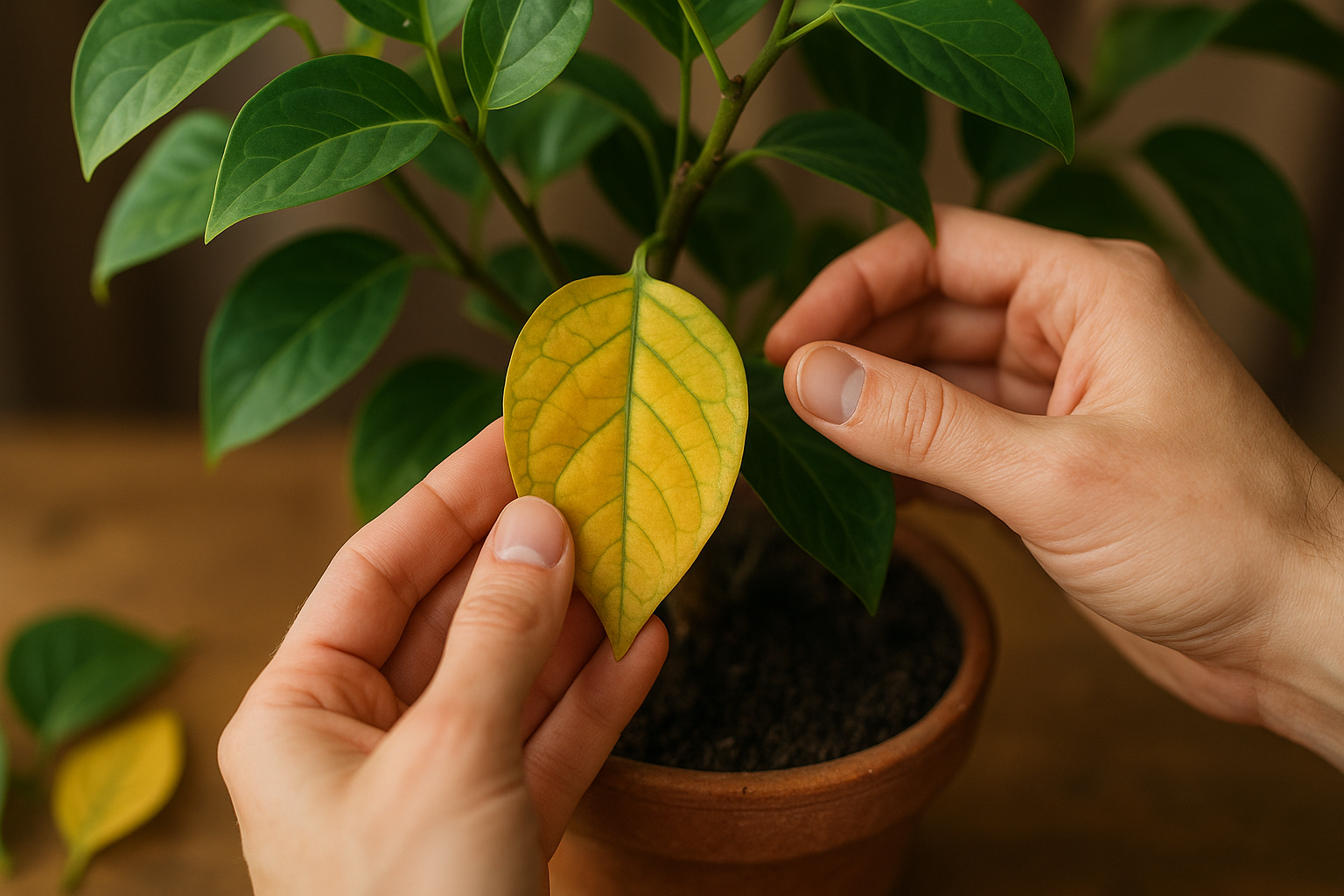Plants can’t speak, but they show clear signals when something is wrong. Learning to read these signs helps you act quickly and prevent small issues from becoming bigger problems. Here’s how to recognize when your plant needs extra attention.
Yellowing Leaves
One of the most common warning signs is yellow leaves.
- Possible causes: Overwatering, poor drainage, or lack of nutrients.
- Solution: Check soil moisture, ensure drainage holes, and fertilize if needed.
Drooping or Wilting
Drooping leaves don’t always mean your plant is dying.
- Underwatering: Leaves wilt but recover quickly after watering.
- Overwatering: Leaves stay limp, and soil feels soggy.
- Solution: Adjust your watering routine to match your plant’s needs.
Brown Tips or Edges
Crispy, brown leaf edges often signal environmental stress.
- Causes: Low humidity, too much fertilizer, or salty tap water.
- Solution: Mist plants, use distilled water, or reduce fertilizer.
Stunted Growth
If your plant isn’t producing new leaves or stems, it may be stressed.
- Causes: Lack of light, poor soil, or being root-bound.
- Solution: Move to brighter light, refresh soil, or repot into a larger container.
Leaf Spots or Discoloration
Brown or black spots on leaves can indicate disease or pests.
- Solution: Trim affected leaves, isolate the plant, and treat with natural insecticides if pests are present.
Roots Growing Out of the Pot
When roots appear through drainage holes or at the surface, your plant is root-bound.
- Solution: Repot into a slightly larger container with fresh soil.
Pest Presence
Sticky residue, webbing, or tiny bugs are signs of pests like spider mites or aphids.
- Solution: Wipe leaves, spray with insecticidal soap, and keep the plant separate until pests are gone.
Soil Issues
Moldy, compacted, or smelly soil signals poor drainage or overwatering.
- Solution: Repot with fresh, well-draining soil.
Final Thoughts: Listen to Your Plants
Plants communicate through their leaves, stems, and roots. By observing changes and responding quickly, you’ll keep your plants strong and healthy. Over time, you’ll develop an instinct for what your green companions need.

